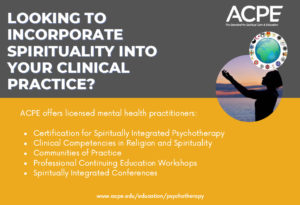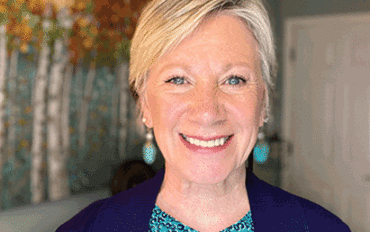The journey of becoming a masterful family therapist is lifelong. It is a discovery of clinical refinement as we explore new relational therapy theories, infuse systemic thinking in other fields like maternal health, and find new tools to better serve families. Each time that we meet with families, parents or children, we gain priceless insights.
With a therapeutic lens emerging in infant mental health (IMH) and family therapy, therapists can cultivate a conscious approach to treatment experiences with families in the prenatal and postnatal period. By centering on the transformation that occurs in attachment relationships, IMH and family therapy fosters a systemic mindset on prevention, cultural responsiveness, palliative care, integrated maternity care, and child development.
Leading with IMH means recognizing culture, optimal growth, social/emotional, behavioral, and cognitive development of the infant in the context of the unfolding relationship between the infant and care-giving system. In doing so, therapists have the opportunity to learn from multiple narratives and generations. For instance, during this time, important social and school readiness milestones such as successful self-regulation, executive functioning, healthy lifestyles, and so many other instrumental developmental life skills are all growing (Zeanah, 2019). IMH reveals that an undesired behavior from a child may be the symptom of a deeper, trauma-related matter, which teaches us as professionals to not target “what is wrong” or the presenting concern in isolation. IMH paired with family therapy teaches us to intentionally approach the interview with a trauma-informed grounding to assess what may or may not have happened in the family life cycle as well as consider past generational trauma. On a fundamental level, this shift in lens and service directly affects the positive social and emotional development of the parent-child relationship.
Additionally, an IMH lens also prepares family therapists to focus on the parallel process and be attentive that they cannot successfully help a family alone. For prenatal care, therapists should collaborative with OBGYNs, midwives, doulas, nutritionists, social workers, and/or delivery nurse practitioners. For postnatal care, therapists should be mindful to work with neonatal nurses, intensive care unit nurses, lactation consultants, pediatricians, social workers, chaplains and/ or hospice as applicable. Especially in times of miscarriage or infant loss, clinicians need to cooperate with medical professionals and the family system in care of their grieving process.
Considering this, an IMH lens requires proper training and professional development. Programs involving parent effectiveness training, infant care and development, training of supplemental caregivers, and training of infant specialists all legitimately fall under the rubric of IMH (Fitzgerald & Barton, 2000).
IMH training needs and professional development recommendations
The demand for trained therapists with an IMH specialization or endorsement is rising. The growth of the IMH field and IMH subject matter experts is also a direct result of the training and education available. Changing the provider paradigm across systems, along with corresponding changes in policies, procedures, protocols, and professional practice, requires combining resources and overcoming the challenges of working across institutions and systems (Lester & Sparrow, 2010). We need to follow the collective wisdom of Dr. T. Berry Brazelton, Dr. Nadine Burke Harris, Dr. Renee Boynton-Jarrett, Dr. Joia Adele Crear-Perry and many other IMH leaders in looking for strengths and passion within these systems, just as we do with parents and children (Lester & Sparrow, 2010). National organizations like “Zero to Three,” “Brazelton Touchpoints Center,” and “Alliance for the Advancement of Infant Mental Health” have training and professional development opportunities for members and providers seeking to learn more about IMH. Due to funding from the Alliance for Innovation on Maternal Health and U.S. the Maternal and Child Health Bureau, each state also has an opportunity to learn more about infant mortality and create programs or trainings to address disparities in care.
The American College of Obstetricians and Gynecologists is also leading the way in partnership with numerous national and state leaders including the Association of Maternal & Child Health Programs (AMCHP) to work with states and health systems to implement maternal safety bundles through data-driven quality improvement. In collaboration with the Council on Patient Safety in Women’s Health Care, “AIM – Maternal Health” has developed bundles to address hemorrhage, hypertension in pregnancy, prevention of maternal venous thromboembolism and support of vaginal births (Alliance for Innovation on Maternal Health, n.d.).
 The AIM – Maternal Health team has a new bundle in the development stage: Reduction of Peripartum Racial Disparities. This bundle is unique because it does not focus on a specific outcome or direct cause of maternal mortality and morbidity; rather, it concentrates on addressing health equity across the care continuum and opportunities presented during the care processes to close disparities in maternal health outcomes (Alliance for Innovation on Maternal Health, n.d). This work group is led by Dr. Elizabeth Howell from the Mount Sinai School of Medicine and Dr. William Grobman from Northwestern University Feinberg School of Medicine. It includes representative membership from the American Association of Family Practitioners, American College of Nurse Midwives, Association of Women’s Health, Obstetric and Neonatal Nurses, Society for Obstetric Anesthesia and Perinatology, Society for Maternal/Fetal Medicine and AMCHP. This bundle will focus on strategies that include establishing systems to accurately document patients’ self-identified race, ethnicity and preferred language; using patient-centered strategies; ensuring staff education on racial and ethnic disparities in maternal health outcomes, shared decision-making and implicit bias; and building a culture of equity at the facility-level to complement a culture of safety. This is an area where AAMFTneeds to be a voice, have opportunities to learn from other disciplines, as well as have their professional membership contributing to the research.
The AIM – Maternal Health team has a new bundle in the development stage: Reduction of Peripartum Racial Disparities. This bundle is unique because it does not focus on a specific outcome or direct cause of maternal mortality and morbidity; rather, it concentrates on addressing health equity across the care continuum and opportunities presented during the care processes to close disparities in maternal health outcomes (Alliance for Innovation on Maternal Health, n.d). This work group is led by Dr. Elizabeth Howell from the Mount Sinai School of Medicine and Dr. William Grobman from Northwestern University Feinberg School of Medicine. It includes representative membership from the American Association of Family Practitioners, American College of Nurse Midwives, Association of Women’s Health, Obstetric and Neonatal Nurses, Society for Obstetric Anesthesia and Perinatology, Society for Maternal/Fetal Medicine and AMCHP. This bundle will focus on strategies that include establishing systems to accurately document patients’ self-identified race, ethnicity and preferred language; using patient-centered strategies; ensuring staff education on racial and ethnic disparities in maternal health outcomes, shared decision-making and implicit bias; and building a culture of equity at the facility-level to complement a culture of safety. This is an area where AAMFTneeds to be a voice, have opportunities to learn from other disciplines, as well as have their professional membership contributing to the research.
As the field continues to evolve and more clinicians shift their focus to IMH, there are several goals for training needs:
- Define and promote a core set of principles pertaining to the understanding of infant development in context that is relevant to the training needs of all practitioners who work with young children (Zeanah, 2019).
- Develop and refine training experiences that differentially develop the knowledge and skills appropriate to the degree to which professionals should be involved with an infant’s state of being, based on their discipline of origin (Zeanah, 2019).
- Provide supervision/consultation that promotes professional development in the context of a supportive relationship (Zeanah, 2019).
- Stereotyping and implicit bias contribute to racial and ethnic disparities in health. Taken with this work, it gives warrant for hospitals and other care organizations to invest in efforts to reduce such biases and explore their connection to institutional racism (Greenwood, Hardeman, Huang, & Sojourner 2020).
- Basic education about neuroscience and how brain development is involved in mental health (Patterson & Vakili, 2014).
- Review of research that explains how sensitive developmental periods, particularly early in life, are affected by environmental factors (Patterson & Vakili, 2014).
- Education about how relational interventions may be able to shape the brain to promote healing (Patterson & Vakili, 2014).
- Form professional social work organizations and actively participate in coalition building with other professions (Alzate, 2009).
- Reach out to policy makers and educate them (Alzate, 2009).
Create alliances with like-minded organizations and agencies that provide services, conduct research, lobby, or educate about issues that directly and indirectly affect the exercise of sexual and reproductive rights (Alzate, 2009).
This is an area where AAMFT needs to be a voice, have opportunities to learn from other disciplines, as well as have their professional membership contributing to the research.
IMH training design in family therapy
From state to county organizations and universities, there are numerous trainings on topics such as trauma-informed care, adverse childhood experiences (ACEs), implicit bias, cultural humility, reflective practice, attachment, resilience, and many others across disciplines. Trainings that are identified as industry standard to support expanding the foundation of family therapy in IMH include DC: 0-5, Child-Parent Psychotherapy, Circle of Security, Brazelton Touchpoints, Attachment and Biobehavioral Catch-Up, FirstPlay, The Growing Brain (Zero to Three), Play Therapy, and Trauma-Focused Cognitive Behavioral Therapy, among many others. Lester and Sparrow (2010) provide essential elements of IMH training design which include IMH and developmental theory, relationship-based centering, time for reflection, cultural responsiveness, transference of learning, and the reality of anxiety of working with infants or families with young children in training. In support of trainees’ needs, best practice is to begin from within. Trainees can reflect on their own family, nurturing or schooling memories in the 0-5 age range, as well as workplace experiences overtime. This helps build the trainee capacity for reflective practice in recognizing what it feels like to be listened to and acknowledged (i.e., a parent with concerns of pregnancy complications, grief, or expectations of baby), as well as builds a relationship between the trainers to trainees, as well as trainees with fellow trainees in the learning space. Next, a structure where trainees can practice careful observation is crucial whether through role plays, live encounters, or homework, as observation is a critical skill and IMH endorsement competency is a best practice (Lester & Sparrow, 2010). A dynamic professional development journey in IMH can be curated with the previously mentioned components that includes the theories of family therapy.
 To address the gap of IMH training in family therapy and bring awareness to birth equity and maternal mental health, the Kirkpatrick (2019) model is an industry option for designing or evaluating any type of training. The training purpose of knowledge and skill attainment must be verifiable by incorporating existing formative or summative evaluation tools. Let’s lay the foundation here by defining goals of the training, selecting vendor/content/tools, and designing evaluation plan/tools (Kirkpatrick, 2019). Questions to consider include:
To address the gap of IMH training in family therapy and bring awareness to birth equity and maternal mental health, the Kirkpatrick (2019) model is an industry option for designing or evaluating any type of training. The training purpose of knowledge and skill attainment must be verifiable by incorporating existing formative or summative evaluation tools. Let’s lay the foundation here by defining goals of the training, selecting vendor/content/tools, and designing evaluation plan/tools (Kirkpatrick, 2019). Questions to consider include:
- What overall problem is the training supposed to solve?
- What outcome would mean success?
- Are there key company metrics you are hoping to improve with this initiative?
Next, Kirkpatrick notes (2019) execution plans include assessing how you will conduct the training, implement support and reinforcement, monitor and adjust for the transference of learning. Questions to consider at this phase include:
- What performance issue are you trying to address?
- What should people actually do on the job after training?
- What support/tools/resources do people need in order to be successful?
Lastly, determine how you will demonstrate value by compiling data, reporting progress and validating the results of the training (Kirkpatrick, 2019). Questions to consider in training finalizations are:
- What do people need to know to be able to perform well on the job?
- What practice is required for people to perform the necessary skills?
- To what degree are you interested in hearing about participant reactions to the training?
- Is there any other data you wish to receive about the training program itself?
Kirkpatrick (2019) also recommends using a blended evaluation plan that focuses on support for trainees and accountability of training provider. Support entails reinforcing what is learned through follow-up modules, on-the-job training, self-directed learning opportunities, refreshers, job aids, reminders, and job modeling. Another form of support is encouraging through coaching and mentoring or setting rewards through pay for performance and recognition (Kirkpatrick, 2019). Accountability or monitoring can look like a pre or post survey, review of trainees’ work after training, assessing key performance indicators, interviews with trainees or supervisors, observing clinical practice and/or self-monitoring/report (Kirkpatrick, 2019). Ongoing monitoring and time to adjust family therapy trainings in IMH should be allotted because plan modifications are not failures or mistakes; they are good training practice (Kirkpatrick, 2019).
Currently, there are no evidence-based maternal mental health or IMH integrated family therapy trainings. Stone (2012) noticed the lack of IMH practitioners inversely limits the expert help available for young children, their families, and primary service providers when a very young child exhibits mental health concerns. We can be that change. Family therapists with an IMH lens can provide consultation to programs serving families with young children in how to support the caregiver-child relationship, promote social-emotional growth, and manage challenging behaviors (Stone, 2012). To get equipped and learn more about how family therapists may be transformative in reproductive care and address birth disparities, download the free “Birth Equity in Family Therapy Toolkit” (sponsored by the AAMFT Minority Fellowship Program).
This article is offered free by AAMFT. If you are interested in accessing members-only content, join today!

Debbie Manigat, DMFT, LMFT, embodies a spirit of empowerment as a healthcare disparity change agent in the field of family therapy. She is a proud graduate of Howard University (Bachelor of Arts) where she majored in Communications and minored in African American Studies. For her Master of Science degree in Counselor Education, she attended Palm Beach Atlantic University and completed dual tracks in Mental Health and Marriage & Family Therapy with an emphasis on soul care. For her Doctor of Marriage & Family Therapy, Manigat attended Nova Southeastern University (NSU) where her research was on integrated reproductive care, Narrative Therapy, Existential and Satir therapies. At NSU, she was a 2019-2021 AAMFT MFP Doctoral Fellow and she is currently an AAMFT Professional member. Her clinical and leadership practice focuses on infant mental health, cultural humility, and holistic wellness. She is passionate about researching, writing, and presenting on healing generational trauma, epigenetics, suicide prevention, positive/ adverse childhood experiences, and birth equity. She is a certified Brazelton Touchpoints Site Network Coordinator, Lean Six Sigma Yellow Belt, and Lean SIX SIGMA DMAIC at a local children’s services council. Additionally, she is trained in Infant Mental Health Level 1 & 2, Reflective Practice & Supervision, Family Play Therapy, Gottman Therapy, Trauma-Focused CBT, Mindfulness-Based Stress Reduction, EMDR and suicide prevention.
REFERENCES
Alliance for Innovation on Maternal Health. (n.d.). Retrieved from https://safehealthcareforeverywoman.org/aim
Alzate, M. (2009). The role of sexual and reproductive rights in social work practice. Affilia: Journal of Women & Social Work, 24(2), 108-119.
Fitzgerald, H. E., & Barton, L. R. (2000). Infant mental health: Origins and emergence of an interdisciplinary field. In J. D. Osofsky & H. E. Fitzgerald (Eds.), WAIMH handbook of infant mental health, Vol.1: Historical, cultural, and international perspectives on infant mental health. New York: John Wiley & Sons, Inc
Greenwood, B. N., Hardeman, R. R., Huang, L., & Sojourner, A. (2020). Physician-patient racial concordance and disparities in birthing mortality for newborns. PNAS Proceedings of the National Academy of Sciences of the United States of America, 117(35), 21194-21200.
Kirkpatrick, W. (2019, May 20). [Conference Presentation]. How to evaluate nearly any type of training. ATD 2019 Conference, Washington, DC, United States.
Lester, B. M., & Sparrow, J. (2010). Nurturing children and families: Building on the legacy of T. Berry Brazelton. Wiley & Sons.
Patterson, J. E., & Vakili, S. (2014). Relationships, environment, and the brain: How emerging research is changing what we know about the impact of families on human development. Family Process, 53(1), 22-32. doi:http://dx.doi.org.ezproxylocal.library.nova.edu/10.1111/famp.12057
Stone, H. A. (2012). Training infant mental Health Therapists: Characteristics Related to Outcomes [published doctoral thesis]. University of Illinois at Chicago. UMI Number: 3542759Zeanah, C. H. (2019). (Ed.). Handbook of infant mental health. (4th edition). New York, NY: Guilford.
Other articles
Giving Infidelity a New Name: How Clinicians Can Best Support Their Clients
Lonergan, Brunet, Rivest-Beauregard, and Groleau (2021) argue that betrayal from a romantic partner is increasingly considered as a form of interpersonal trauma. Furthermore, about 30%-60% of individuals who are betrayed by their romantic partner will struggle with symptoms of Post Traumatic Stress Disorder (PTSD) and anxiety and depression at the clinical level (Lonergan et al., 2021).
Lindsay Hall
Working Systemically with Children In Foster Care
According to the 2020 data from the Adoption and Foster Care Analysis and Reporting System, 407,493 children were in the system. The number who exited the system during the same year were 224,396. Exiting means that the children were reunited with their family of origin. States differ with respect to age limits with 18 years old being the mean. The mean stay in foster care is 8.4 years as of September 30, 2020 (The Administration for Children and Families, 2022).
Richard P. Long, PhD
Systemic Understanding for Healing and Health
For the past four years, I have been serving on the AAMFT Board of Directors in my presidency tenure (two years as president-elect, two years as president; in 2023 I will shift to past-president). I have watched in awe as the world changed in some radical ways, and alongside my fellow board members, have worked diligently to help ensure the advancement of marriage and family therapy through the health of our Association and its future.
Shelley A. Hanson, MA





